Welcome to Matrix Education
To ensure we are showing you the most relevant content, please select your location below.
Select a year to see courses
Learn online or on-campus during the term or school holidays
Learn online or on-campus during the term or school holidays
Learn online or on-campus during the term or school holidays
Learn online or on-campus during the term or school holidays
Learn online or on-campus during the term or school holidays
Learn online or on-campus during the term or school holidays
Learn online or on-campus during the term or school holidays
Get HSC Trial exam ready in just a week
Get HSC exam ready in just a week
Select a year to see available courses
Science guides to help you get ahead
Science guides to help you get ahead

Guide Chapters
Let’s learn how to analyse film for HSC English! We will go through film types, film genres, features unique to film and provide you with a step-by-step process to analyse film and a free film analysis planner!
Create powerful study notes and start writing more insightful essays on film Fill out your details below to get this resource emailed to you. "*" indicates required fields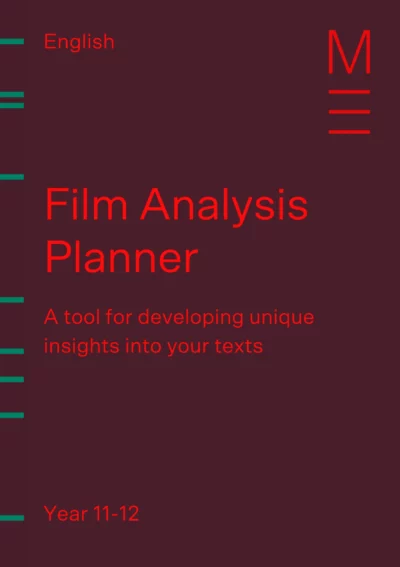
Download your FREE Film Analysis Planner

Download your FREE Film Analysis Planner
There are lots of similarities when you analyse film and literary texts.
For example, you need to critically analyse techniques, evaluate how the composer conveys meaning, looking at themes and ideas and lots more!
However, the major differences between film analysis and literary analysis are in the mode, media and form!
‘Mode, media and form’ might sound a bit familiar to you… That’s because they’re in your syllabus!
Unlike literary texts, film is an audiovisual form.
This means that films represent meaning by combining both visual images and audio.
So, when you analyse film, you have to examine lots of different elements like:
This means that you have to be comfortable with all of these elements to analyse them in your assessments and exams.
This also means that you need to be able to evaluate the most effective and relevant techniques that will support your ideas, since there are so many to choose from.
However, ensure that you analyse a substantial amount of film techniques. Don’t focus on dialogue, you’ll miss the richness of other aspects of representation in the text. You want to be able to show your ability to evaluate a film’s modes, media and form!
Note: In this article, we provide you with a list of features that are unique to films. Take a good read of these techniques so that you can easily identify them in your films.
In Part 1 of our Beginner’s Guide to Acing HSC English, we went through how to analyse English text.
However, now, let’s get into the gritty details of film and see how to analyse films for HSC English!
We know. It’s tempting to just watch a film once and analyse it straight away.
However, your first viewing is very important.
You need to watch the film uninterrupted to get a holistic understanding of the whole film.
This means that you should not be taking notes, going on your phone or getting distracted in your 1st viewing.

In this viewing, you need to:
After you do this, feel free to do some research to get a better understanding of your text, and the context of the text & author.
Writing notes early is a good habit to get into.
When you write notes, you are not only consolidating your understanding of the film, but you are preparing yourself for your exams.
You cannot possibly remember all the techniques in your film 3 months after you watched it.
So, your notes will serve as a quick reminder of what you know about your text before your assessments!
This is why you need to make consistent notes throughout your whole analysis process.
Let’s see how we can write our notes after our first viewing.
Now, it’s time to rewatch the film again! But this time, you can have your pen and paper with you.
In this step, you are seeing how the film creates meaning and developing your understanding of the film’s core ideas.
This means that you need to see how individual scenes fit into the wider narrative.
It is important that you look at the film’s holistic features and its key episodes in this step.
Note: You don’t need to unpack the film for techniques yet! However, if they do jump out at you, just jot them down! You don’t want to forget them.
What are the holistic features?
Holistic features are techniques that run across the whole film.
These include:
What are the key episodes?
Key episodes are important scenes in the film.
This means that they strongly convey an idea or is an important point in the plot.
So, what are we doing in our 2nd viewing?
Remember to jot down all of your findings in your notes!
Don’t worry! You don’t need to watch the whole film again (unless you really want to).
In this viewing, we are watching your film’s key episodes and unpacking the gritty details!
This means that you need to look for specific examples, analyse them, see how it reflects the film’s themes and ideas and link it to your module.
Remember, different techniques have different values.
You should always be looking for higher-order techniques and examples that strongly convey an idea.
For example, a simple crosscut between 2 scenes is a technique. But it doesn’t serve an important role in conveying the film’s message.
On the other hand, a series of quick crosscuts used with discordant non-diegetic music can become symbolic of the character’s deteriorating psyche.
As you can see, a technique can be used in different ways for different purposes. It is up to you to find these complex examples.
Note: A simple way to identify a higher-order technique or a strong example is seeing the complexity of its representation.
The more complex it is, the more effective it is in your essays!
So, what are we doing in our 3rd reading?
Remember, feel free to do some research if you are curious about your text.
You should look for some scholarly articles and see if there are any interesting comments about your film.

It’s exam time.
You don’t want to skip through your whole film to find techniques again.
You also don’t want to lose sections of your notes because you weren’t organised.
This is why you need to tabulate and organise all your notes into one safe place!
If your notes are typed, make sure that you have a copy on your USB and another on your laptop or computer.
If your notes are handwritten, keep them in a plastic sleeve or folder in a place that you will remember.
You don’t want to spend the night before your exam panicking because you lost your notes.
By now, you should have 3 sets of notes from your 3 viewings (and some class notes from your discussions about your film).
Collate all your findings into one document!
Remember, we are NOT asking you to rewrite your notes! We are asking you to organise them.
This means that you need to copy and paste or organise your sheets so that you have a table of examples for each main theme or idea.
For example,
| Theme / Idea / Character | Example | Technique | Analysis | Effect | Research | |
| What to do | Identify your theme, idea or character | Find all relevant and strong examples that support or relate to your selected theme/idea/character. Screenshots or a description of what is happening is always a good idea. | Identify the technique(s) used in the example | Explain how the technique creates meaning. | Take note of how the example shapes or affects your understanding of the meaning | Identify what critics say about your example. |
Organising your notes based on your film’s themes, ideas or characters will help you prepare for your assessments and exams.
This way, you can quickly identify relevant and effective examples that can support your arguments.
Learn how to structure and write an HSC essay step-by-step with HSC experts at Matrix. Learn more about Year 12 English Course.
Start HSC English confidently
Expert teachers, detailed feedback, one-to-one help! Learn from home with Matrix+ Online English courses.
You might have come across different types of films in your studies.
Each film type has different distinctive features that you need to know to effectively analyse them.
Remember, film type is NOT the same as genres.
| Film type | What is it? | Example |
| Short films | A film that usually runs for less than 40 minutes. |
|
| Feature film | A film that is around 75 – 210 minutes long. They are usually standalone movies that are screened in cinemas or released direct to streaming (Netflix, Amazon Prime, Disney+) or video-on-demand (like Google Play or the Apple Store) |
|
| TV shows | A series of episodic films, often with one major narrative running through them. Each episode tends to be released weekly. |
|
| Documentary | A non-fictional film that consists of documenting real-life events or people. |
|
| Animated films | Films that are made of moving graphic drawings. Actors do not appear on the screen and act. |
|
It is very important that you know different genres of film and its conventions.
This is because certain genres use certain film techniques, narrative style, stock characters and even explore similar subject matters.
When you have a strong understanding of different genres, you can quickly identify these conventions and their purpose in the film.
This will help you create strong analyses.
Genres are used to describe categories of film.
According to film theorist, Thomas Schatz, film genre is “genre incorporates a sort of narrative shorthand whereby significant dramatic conflicts can intesify and then be resolved through established patterns of action and by familiar chracter types” (Hollywood Genres).
In summary, films in the same genre deal with similar conflicts and are also made up of a series of repetition.
So, if you look carefully at films of the same genre, you will see different aspects being repeated in different ways.
| Genre | What is it? | Common film techniques | Characters | Common subject matters / conflict | Examples |
| Docu-drama | Docudrama is a re-enactment of a event or issue. It looks like a documentary but it is fictional. | Interviews Vox Populi Archival footage | Narrator | Historical events Social issues Important person’s life | George Clooney’s Good Night and Good Luck Al Pacino’s Looking For Richard |
| Drama | Dramas deal with real life issues and emotions with realistic characters. However, these themes can be dramatised. | Over the shoulder shots Modern, normal clothes appropriate to the story world’s context | Realistic characters
| Real-life situations and conflicts Intense social interactions | Stephen Daldry, The Hours Joe Wright’s Atonement |
| Film noir | Film noir explores dark, pessimistic and fatalistic subjects. | Chiaroscuro lighting Cheeky dialogue Omionous facial expressions Flashbacks | Antihero Femme fatale | Crime and investigation Order vs disorder Dark subject matter | Howard Hawk’s The Big Sleep Michael Curtiz’s Mildred Pearce Fritz Lang’s The Big Heat |
| Horror | Horror aims to create fear and terror in the audience. | Extreme close-ups Dutch / Cant angles Point of view shots Eerie sound effects | Monster Evil / psychopathic characters
| Paranormal subjects and events Typical fears The unexplained | John Carpenter’s The Thing Oren Peli’s Paranormal Activity John Leonetti’s Anabelle |
| Musicals | A genre of film where song sequences are used to propel the plot. Here, actors break into a dance and sing along. | Music scores Dance movements | Protagonist usually has a dream or big goal | Happy subjects (tends to gloss over darker issues)
| Randal Kleiser’s Grease Disney’s Lion King |
| Period films / Historical drama | Films that are set in a historical time or event | Realistic costume and props Realistic and appropriate era settings | – | The plot tends to focus on love, relationships and family. | Jane Campion’s Bright Star Julian Fellowe’s Downton Abby |
| Romance | Genre of film that focuses on a love story between two characters | Low-key and soft lighting Warmer hues Everyday clothing that are appropriate to the film-world’s context | Two characters who fall in love, where one pursues the other | Love story | Josh Boone’s The Fault in Our Stars Thea Sharrock’s Me Before You |
| Sci-fi | A genre that deals with futuristic concepts about science and technology | Low-key lighting Techno sound effects Close up of technological / futuristic elements | Controlling goverment Strong hero protagonist who searches for the truth | Space travel Time travel Post-apocalyptic world | Ridley Scott’s Alien Wes Balls’ Maze Runner David Cronenberg’s EXistenZ |
| Western | Western genre is usually set in the American WIld West during 1860s – 1910 Some Westerns transpose this to other settings, such as Samurai epics | Long shots of desert land or shoot-out Stereotypical costumes (black vs white clothes) Sound effects
| Outlaws and cowboys Traditional Western hero Native Americans | Order vs disorder Violence and crime American myth and ideals | Sam Peckinpah’s The Wild Bunch John Ford’s Stagecoach James Mangold’s Logan Akira Kurosawa’s Hidden Fortress (The basis for Star Wars) |
| Action | Action films tend to have fast-paced plots with violence and ‘action’ | Quick cuts Extravagant visual effects Slow-motion editing | Strong hero is often ex-military or someone with a questionable past Stereoypical bad guy | Violence [Car] Chases Romantic subplot | Gary Scott Thompson and Vin Diesel’s Fast and Furious Tony Gilroy’s Bourne Legacy |
| Comedy | This genre aims to make the audience laugh or find humour | Low-key lighting Lots of establishing shots Montages | Main protagonist who is best friends with an awkward, dorky idiot character Villain | Good vs bad Friendship Conflict | Phil Lord & Chris Miller’s 21 Jump Street Todd Phillip’s The Hangover Charlie Chaplin’s The Great Dictator |
When you learn how to analyse film for HSC English, you MUST analyse film techniques.
You will get poor marks if you solely focus on narrative devices or literary techniques in dialogue.
Instead, you need to show that you understand how your form and media conveys meaning.
We have an extended list of film techhniques and examples in our Film Techniques Toolkit.
Let’s quickly go through the common and important techniques that you must know to analyse films.
Camera Angle refers to the tilt or direction of the camera in relation to the scene and characters.
Let’s see the different types of angles used in film:
The actor’s body language, gestures and facial expression play a large role in conveying meaning.
It can set the mood, atmosphere or tone of the scene.
However, it is important to note that these techniques are often not complex enough to support a whole argument.
Instead, you want to think about how these work together, perhaps with dialogue, to develop meaning. For example, consider this well-known clip from Martin Scorcese’s Taxi Driver starring Robert De Niro:
It is the combination of actions, gestures, facial expressions and dialogue that characterise Travis Bickle as a troubled person.
So, when you are learning how to analyse films for HSC English, only use these techniques to support another example.
Colour is very important because it helps the filmmaker convey a particular mood or tone.
This means that you have to figure out why the composer chose a particular colour palette, and which emotions are associated with it.
For example, red creates a warm and ferocious atmosphere that indicates danger.
Whereas, blue is cold and isolating.
Consider these stills:
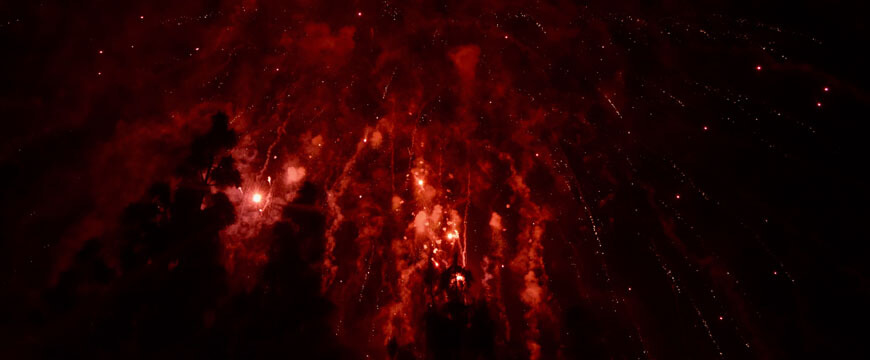

You can also go into more depth and analyse the purpose of the film’s saturation or hue.
A costume doesn’t need to be extravagant and fancy. In film, a costume is what the character is wearing.
Sometimes, characters have costumes that are symbolic of their personality or what is happening in the film.
For example, bad characters tend to wear black whereas good characters tend to wear white.
Cuts refer to how a shot moves from on shot into the next shot. Transition refers to how a scene moves into the next scene.
Cuts and transition are used to depict how visual and aural elements are edited together and combined to make the film flow (or not flow).
Let’s take a look at different types of film cuts:
Now, let’s see different film transitions:
Watch this video to see these film cuts and transitions in action:
We analyse dialogue separately from sound because it contains important information about the plot, themes and characters.
You can analyse literary techniques in dialogue, like repetition, metaphor, anaphora and lots more!
However, you can analyse dialogue from a filmic perspective too!
Here are some elements that you can look at to analyse dialogue:
Lighting refers to how much light is in a scene and its angle on the subject.
Filmmakers control lighting to create a certain atmosphere or tone.
For example, if we use low-key lighting on a man’s neutral facial expression, he will seem like a murderer. Whereas, if we use fill lighting on this same face, then it looks like a passport photo.
As such, lighting plays a very large role in creating and conveying meaning.
Here are different lighting types that are commonly used in films:
| Lighting Type | Define | Example |
| Low-key lighting | Creates a high contrast between shadow and light | 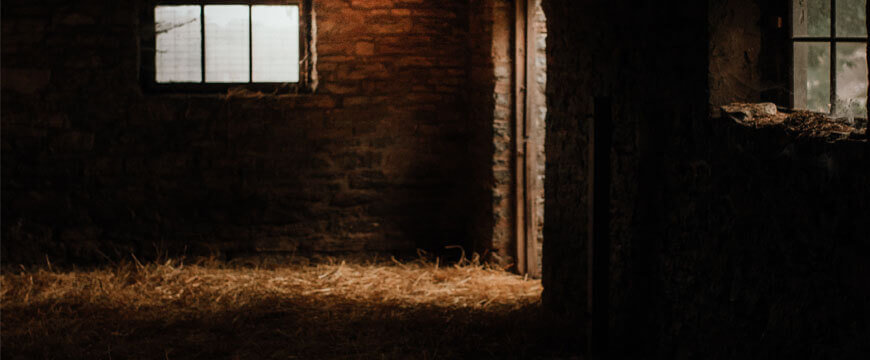 |
| High-key lighting | Creates a low contrast between shadow and light; soft |  |
| Fill lighting | Less intense light used to eliminate shadows and soften the image |  |
| Soft light | Diffused and ‘soft’ look | 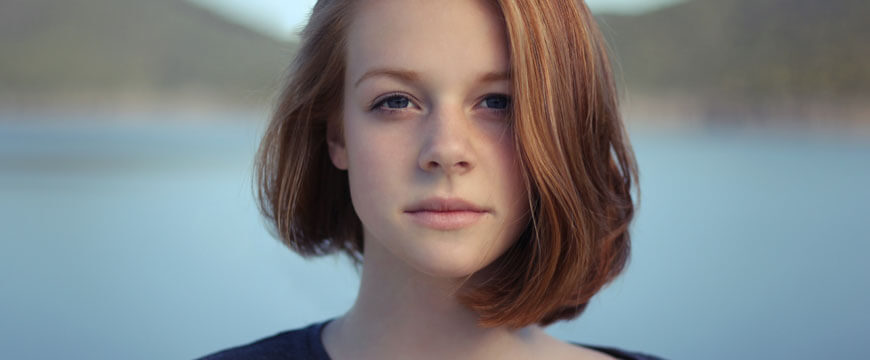 |
| Hard light | Clear defined shadows, crisp textures, sharp edges | 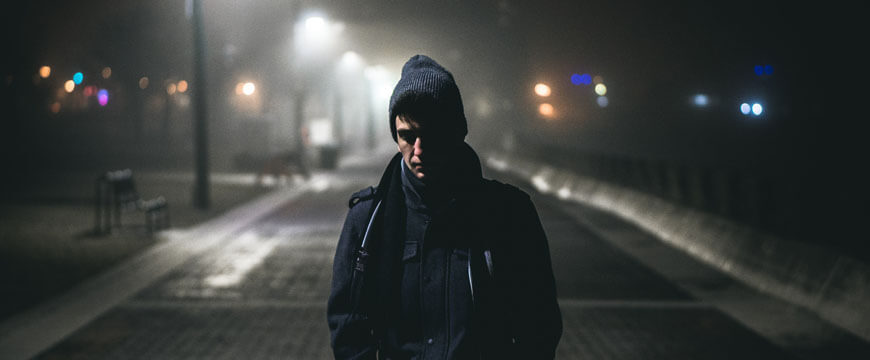 |
| Frontal lighting | Light shining in front of the subject; eliminates shadows |  |
| Side light | Light shone on the side of a subject. It sculpts the character’s features | 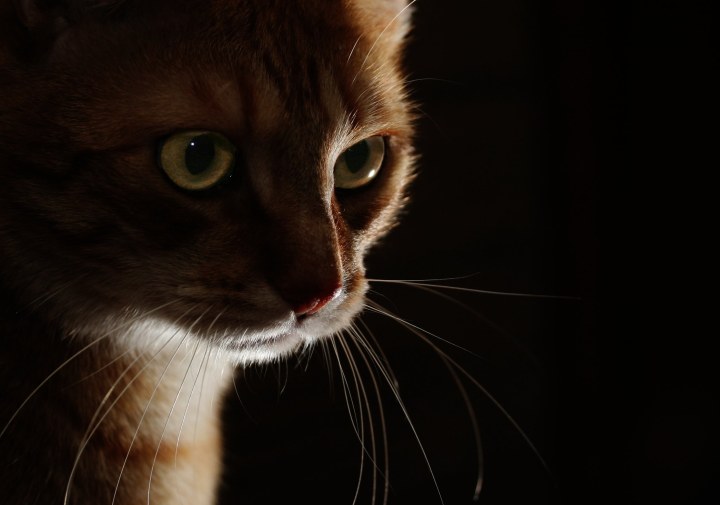 |
| Backlighting | Light shone from behind the subject. It creates shadows | 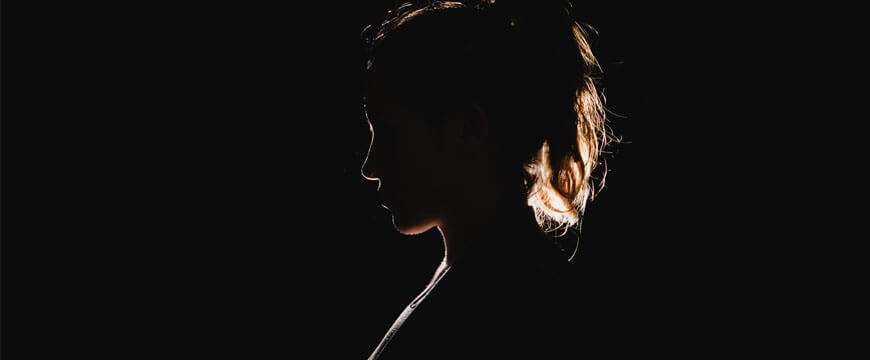 |
| Underlighting | Light shone from below the subject. This distorts features | 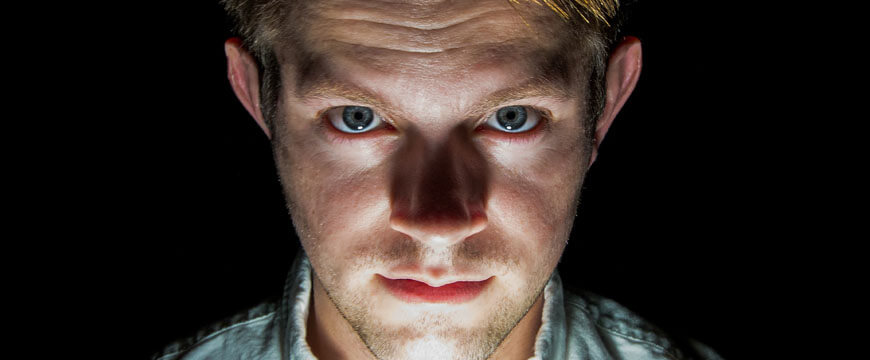 |
| Top lighting | Light that is shone from directly above the subject. This creates a glamorous image | 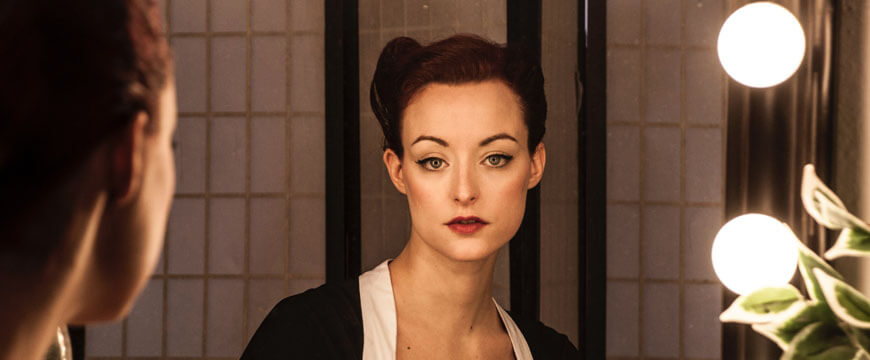 |
Mise en Scene refers to how the composer stages and presents the film for the camera.
They manipulate different elements to create a certain atmosphere and subsequently, meaning.
The elements of mise-en-scene include:
When you analyse mise-en-scene, you need to also analyse the elements of mise-en-scene.
Shots refer to the distance of the camera in relation to the subject or scene.
An easy way to determine the shot type is by seeing how a human is framed in the scene.
However, if there are no humans in the shot, don’t fear! You can always picture a human in your frame, relative to the scene!
Let’s take a look at different shot types:
The sound of the film can help set the mood, tone and atmosphere of the film.
Sound can be divided into:
There are also different types of sounds that are used in films:
In Part 1 of our Beginner’s Guide to Acing HSC English, we went through how to analyse English text.
However, now, let’s get into the gritty details of film and see how to analyse films for HSC English!
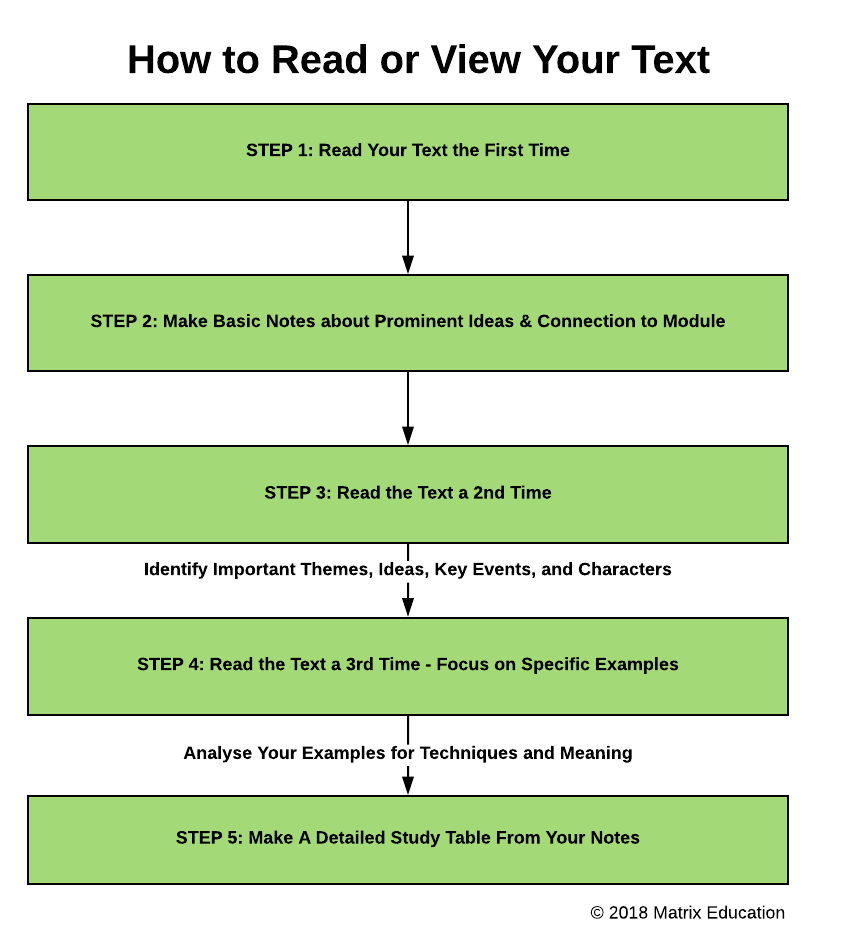
We know. It’s tempting to just watch a film once and analyse it straight away.
However, your first viewing is very important.
You need to watch the film uninterrupted to get a holistic understanding of the whole film.
This means that you should not be taking notes, going on your phone or getting distracted in your 1st viewing.

In this viewing, you need to:
After you do this, feel free to do some research to get a better understanding of your text, and the context of the text & author.
Writing notes early is a good habit to get into.
When you write notes, you are not only consolidating your understanding of the film, but you are preparing yourself for your exams.
You cannot possibly remember all the techniques in your film 3 months after you watched it.
So, your notes will serve as a quick reminder of what you know about your text before your assessments!
This is why you need to make consistent notes throughout your whole analysis process.
Let’s see how we can write our notes after our first viewing.
Now, it’s time to rewatch the film again! But this time, you can have your pen and paper with you.
In this step, you are seeing how the film creates meaning and developing your understanding of the film’s core ideas.
This means that you need to see how individual scenes fit into the wider narrative.
It is important that you look at the film’s holistic features and its key episodes in this step.
Note: You don’t need to unpack the film for techniques yet! However, if they do jump out at you, just jot them down! You don’t want to forget them.
What are the holistic features?
Holistic features are techniques that run across the whole film.
These include:
What are the key episodes?
Key episodes are important scenes in the film.
This means that they strongly convey an idea or is an important point in the plot.
So, what are we doing in our 2nd viewing?
Remember to jot down all of your findings in your notes!
Don’t worry! You don’t need to watch the whole film again (unless you really want to).
In this viewing, we are watching your film’s key episodes and unpacking the gritty details!
This means that you need to look for specific examples, analyse them, see how it reflects the film’s themes and ideas and link it to your module.
Remember, different techniques have different values.
You should always be looking for higher-order techniques and examples that strongly convey an idea.
For example, a simple crosscut between 2 scenes is a technique. But it doesn’t serve an important role in conveying the film’s message.
On the other hand, a series of quick crosscuts used with discordant non-diegetic music can become symbolic of the character’s deteriorating psyche.
As you can see, a technique can be used in different ways for different purposes. It is up to you to find these complex examples.
Note: A simple way to identify a higher-order technique or a strong example is seeing the complexity of its representation.
The more complex it is, the more effective it is in your essays!
So, what are we doing in our 3rd reading?
Remember, feel free to do some research if you are curious about your text.
You should look for some scholarly articles and see if there are any interesting comments about your film.

It’s exam time.
You don’t want to skip through your whole film to find techniques again.
You also don’t want to lose sections of your notes because you weren’t organised.
This is why you need to tabulate and organise all your notes into one safe place!
If your notes are typed, make sure that you have a copy on your USB and another on your laptop or computer.
If your notes are handwritten, keep them in a plastic sleeve or folder in a place that you will remember.
You don’t want to spend the night before your exam panicking because you lost your notes.
By now, you should have 3 sets of notes from your 3 viewings (and some class notes from your discussions about your film).
Collate all your findings into one document!
Remember, we are NOT asking you to rewrite your notes! We are asking you to organise them.
This means that you need to copy and paste or organise your sheets so that you have a table of examples for each main theme or idea.
For example,
| Theme / Idea / Character | Example | Technique | Analysis | Effect | Research | |
| What to do | Identify your theme, idea or character | Find all relevant and strong examples that support or relate to your selected theme/idea/character. Screenshots or a description of what is happening is always a good idea. | Identify the technique(s) used in the example | Explain how the technique creates meaning. | Take note of how the example shapes or affects your understanding of the meaning | Identify what critics say about your example. |
Organising your notes based on your film’s themes, ideas or characters will help you prepare for your assessments and exams.
This way, you can quickly identify relevant and effective examples that can support your arguments.
© Matrix Education and www.matrix.edu.au, 2025. Unauthorised use and/or duplication of this material without express and written permission from this site’s author and/or owner is strictly prohibited. Excerpts and links may be used, provided that full and clear credit is given to Matrix Education and www.matrix.edu.au with appropriate and specific direction to the original content.